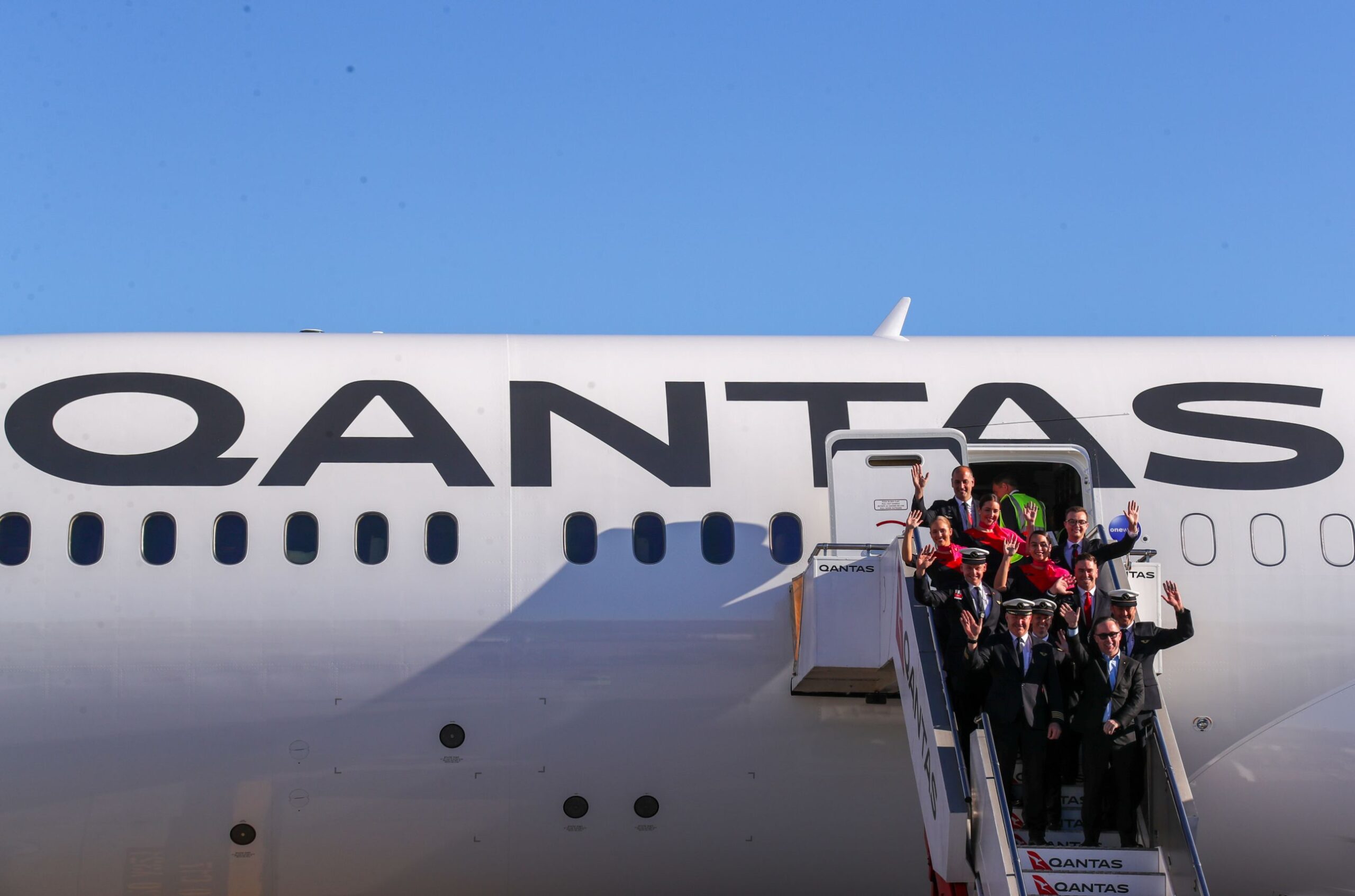United States News
The Non-Stop New York to Sydney Flight Could be Closer Than you Think

The proposed New York to Sydney non-stop flight will take around 19-and-a-half hours, shaving almost three hours off the current New York-LA-Sydney route

The proposed New York to Sydney non-stop flight will take around 19-and-a-half hours, shaving almost three hours off the current New York-LA-Sydney route
Flying to direct to The Big Apple could be closer than you think, with the world’s first New York to Sydney non-stop commercial flight having taken place last week. The Qantas flight, which took 19 hours and 16 minutes, is one of three ultra long-haul research flights the Australian airline announced in August would take place this year as part of Project Sunrise – a goal to operate regular, non-stop commercial flights from the east coast of Australia to London and New York. The direct flight will shave nearly three hours off the existing New York to Sydney via Los Angeles flight.
“Flying non-stop from the East Coast of Australia to London and New York is truly the final frontier in aviation, so we’re determined to do all the groundwork to get this right,” said Qantas CEO Alan Joyce in August on announcing the research flights.
A total of 49 passengers and crew were on the New York to Sydney flight, with a series of experiments assessing inflight passenger and crew health and wellbeing taking place throughout the journey. Tests ranged from monitoring pilot brain waves, melatonin levels and alertness, through to exercise classes for passengers. Cabin lighting and in-flight meals were also adjusted in ways that are expected to help reduce jetlag, according to the medical researchers and scientists who have partnered with Qantas. While night flights usually start with dinner before it’s ‘lights out’, for the New York to Qantas flight the passengers were served lunch and the cabin lights were kept on for the first six hours, to match the time of day at the destination.
The findings from the research flight will be used help shape the cabin design, inflight service and crew roster patterns for Qantas’ ultra long haul flights in the future.
The direct flight marks a significant milestone for commercial aviation, wihch wasn’t lost on aviation staff in both New York and Sydney, according to Qantas Captain Sean Golding, who led the four pilots operating the service. “We had a lot of interest from air traffic controllers as we crossed through different airspace because of the uniqueness of this flight. We also had a special sign off and welcome home from the control towers in New York and Sydney, which you don’t get every day.
“Overall, we’re really happy with how the flight went and it’s great have some of the data we need to help assess turning this into a regular service,” Golding added.
Two more research flights are planned as part of the Project Sunrise evaluations – London to Sydney in November and another New York to Sydney in December, with emissions from all research flights to be fully offset. When the airline conducts its research flight from London to Sydney, it will be only the second time a commercial airline has done so.
A decision on Project Sunrise is expected by the end of the year.
Fast Facts
- QF 7879 non-stop flight from New York to Sydney will take around 19-and-a-half hours subject to wind and weather conditions on the day. This compares to a travel time of 22 hours and 20 minutes on the current New York to Sydney via Los Angeles flight.
- Distance between New York and Sydney is 16,200 kilometres.
- The flight will be operated by a brand new Boeing 787-9, registration VH ZNI, named “Kookaburra”
- Months of flight planning have gone in to determining the optimum flight path, including running daily plans to establish wind and weather patterns
- Four pilots will be on rotation throughout the flight. Two additional pilots will be in the cabin, having flown the aircraft to New York.
- Nearly half of the aircraft weight on take-off is fuel. The other is aircraft, passengers and bags.
- Flight will travel at 85% the speed of sound which is around 930 kilometres an hour.
- Cruising altitude will start at 36,000 feet for the first few hours and then as the aircraft weight reduces with fuel burn, the cruising altitude will increase to 40,000 feet.
- Pantry galley weight will be 1,500kg’s (food, trolleys etc.)
- Findings on crew wellbeing will be shared with the Australian Civil Aviation Safety Authority to help inform regulatory requirements associated with ultra-long-haul flights over 20 hours.
Latest Articles
Don't miss the latest from Luxury Travel
